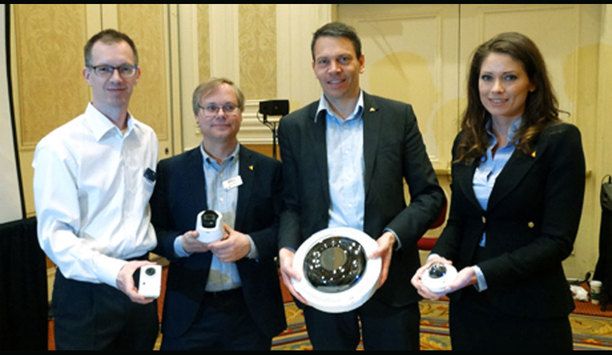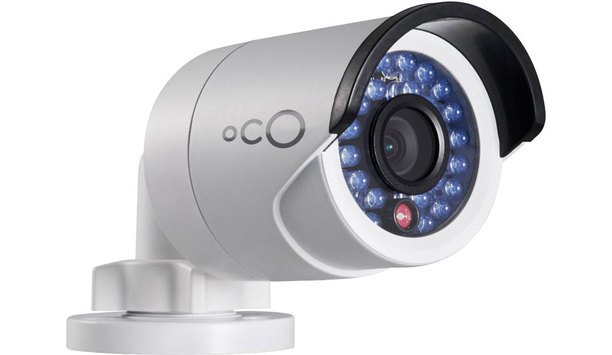It seems every company is seeking to re-invent itself in our changing market. A case in point is AMAG, which has long been associated with access control. Today, AMAG’s proposition to the market is much broader than that, now also encompassing Symmetry CONNECT, a policy-based platform providing safety, security and risk management capabilities enabling organizations to manage their enterprise security functions. This spring, AMAG is introducing Symmetry GUEST, a new identity management system. They also have Symmetry CompleteView, a closely integrated video management component (OEM’d from Salient Systems). All this in addition to the core Symmetry Access Control product.
Broader Approach To Security Operations & Technology For Better Customer Outcome
At AMAG’s 2016 Security Engineering Symposium, I had a chance to discuss AMAG’s new, broader approach with Kurt Takahashi, Senior Vice President of Sales. He’s definitely more a “vision guy” than a “product guy,” and he shared a broad vision for AMAG that focuses on operations as well as technology, and on ensuring a good customer outcome.
"We want to change the perception in the market that we’re only an access control company" says Kurt Takahashi, Senior VP of Sales, AMAG |
“For a company like ours, known to be an access control company, my vision is to get people to see us in a broader light of a policy-based platform that builds a foundation both from the technological and the operational roadmap,” Takahashi says. “Together, that’s our value proposition.”
The “policy-based platform” is Symmetry CONNECT, which adds an identity management aspect and a “smart engine” that enables AMAG integrators to automate processes to police the system and ensure customers’ success with it. If it sounds like a physical security information management system (PSIM) or a physical identity and access management (PIAM) system, it’s not an accident. Takahashi acknowledges Symmetry CONNECT shares features with those (typically more expensive) systems.
Simplifying PSIM & PIAM For Greater Adoption
“We are looking to simplify it, because most companies don’t use the full functionality [of a PSIM or a PIAM],” he comments. “We try to look at the key elements that people use most of the time and implement those into our solution, so we can operationalize our platforms. That policy engine embodies the key elements of a PSIM and a PIAM into our platform, so we can extend the value of Symmetry.” (Takahashi was previously Vice President of North American Sales at Quantum Secure, a PIAM company.)
“We aren’t trying to shove technology down people’s throats; we are seeking to look at the broader operational value of it,” he says. “At the end of the day, that’s a game changer. I don’t just want to sell a bunch of hardware; I want to sell a solution that addresses the operational need.”
The broader approach plays particularly well among larger enterprise customers, especially those in highly regulated industries and/or who have complex system requirements. A public company subject to Sarbanes-Oxley compliance (requiring data center audits, for example) can make good use of such a system, as might a utility seeking to meet NERC/FERC requirements. “How do those things work?” says Takahashi. “The needs of customers are changing and becoming more complex. Technology is more advanced. That’s where you can make a big difference and differentiate yourself by adopting this methodology, whether you’re a consultant, an integrator, a technology person or an operator. I think the market is hungry for this type of discussion.”
Breaking The Stereotype Of Access Control Companies
Takahashi talks about “operationalizing the technology,” that is, to bring disparate systems together and make it easy for clients to solve three core issues – cost, risk and compliance. He concedes it’s a challenge to get the message out.
"We aren’t trying to shove technology down people’s throats; we are seeking to look at the broader operational value of it. I don’t just want to sell a bunch of hardware; I want to sell a solution that addresses the operational need" |
“We want to change the perception in the market that we’re only an access control company,” he says.
“It’s all about the outcome and customer experience from an operational perspective. It takes evangelism and education of that message to the market – what our solution actually does, how it helps, how it is different, and why it matters.”
Takahashi says: “The biggest ‘ah-ha’ moment I have with clients and partners is when I have this operational discussion. Traditionally, people have solved the operational challenge with more people. What happens is, you need more people because it’s so manual and disjointed. The ‘ah-ha’ moment I have with most people is when you start talking about operational efficiencies and how you can change that. What takes 30 steps today can take you two steps tomorrow using technology. But most people aren’t having that conversation. They are just assuming I’ll sell you a system and you will know what to do with it.”
“When I talk to consultants and tell them what we are doing, they say it’s about time an access control company took on this problem,” Takahashi adds. “Until now, they had to buy a new piece of third-party software and lay it on top, and it’s too expensive and they have to maintain the integrations. Now we have the technology, and it works with Symmetry and extends the operational value of Symmetry by allowing them the same feature sets. It’s not a full-blown identity management system, but we have taken some of the key things that people use every day and incorporated them.”
It’s an automation approach that has been used in the IT arena for years. “Those of us in physical security are the only ones not doing it,” says Takahashi.











































